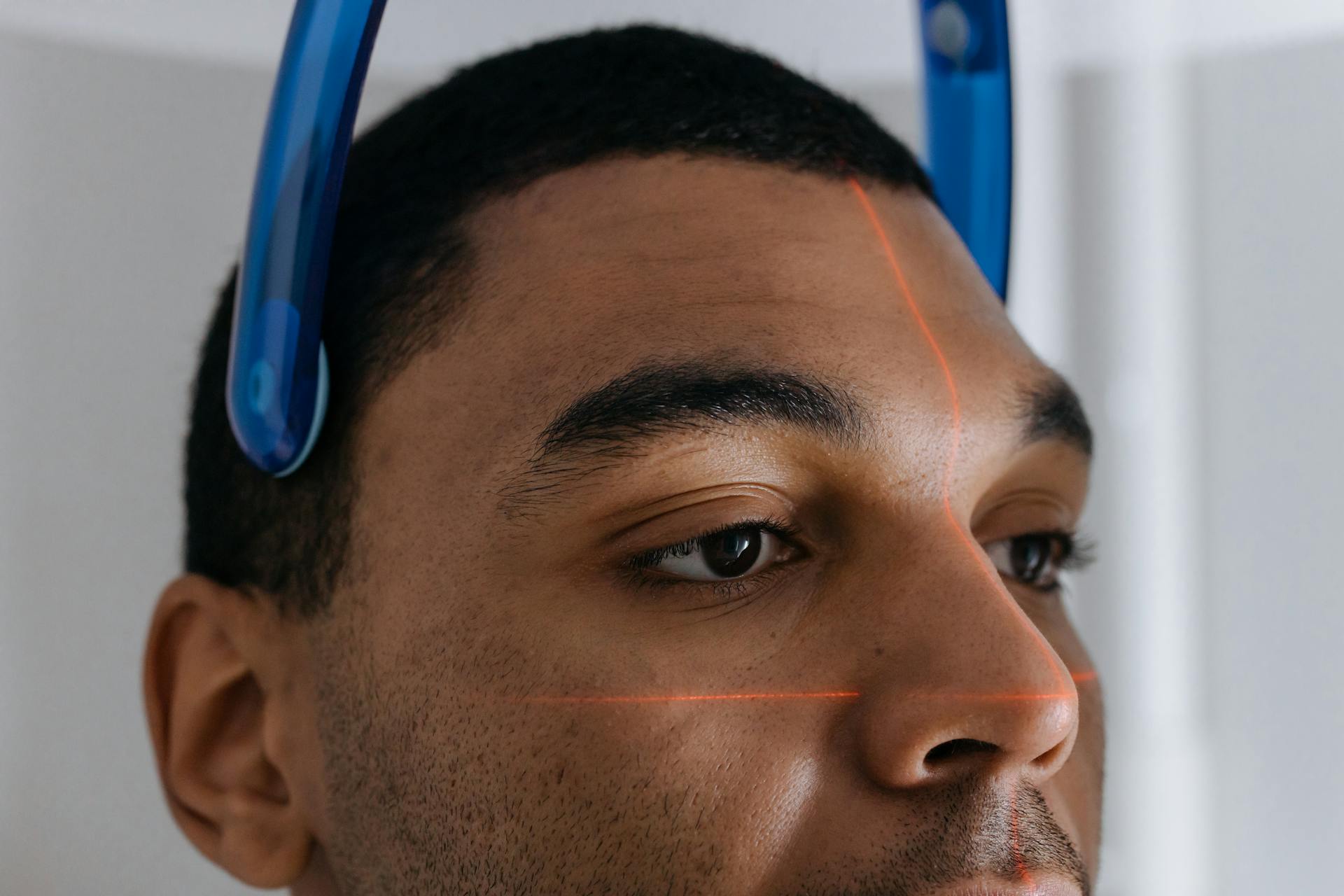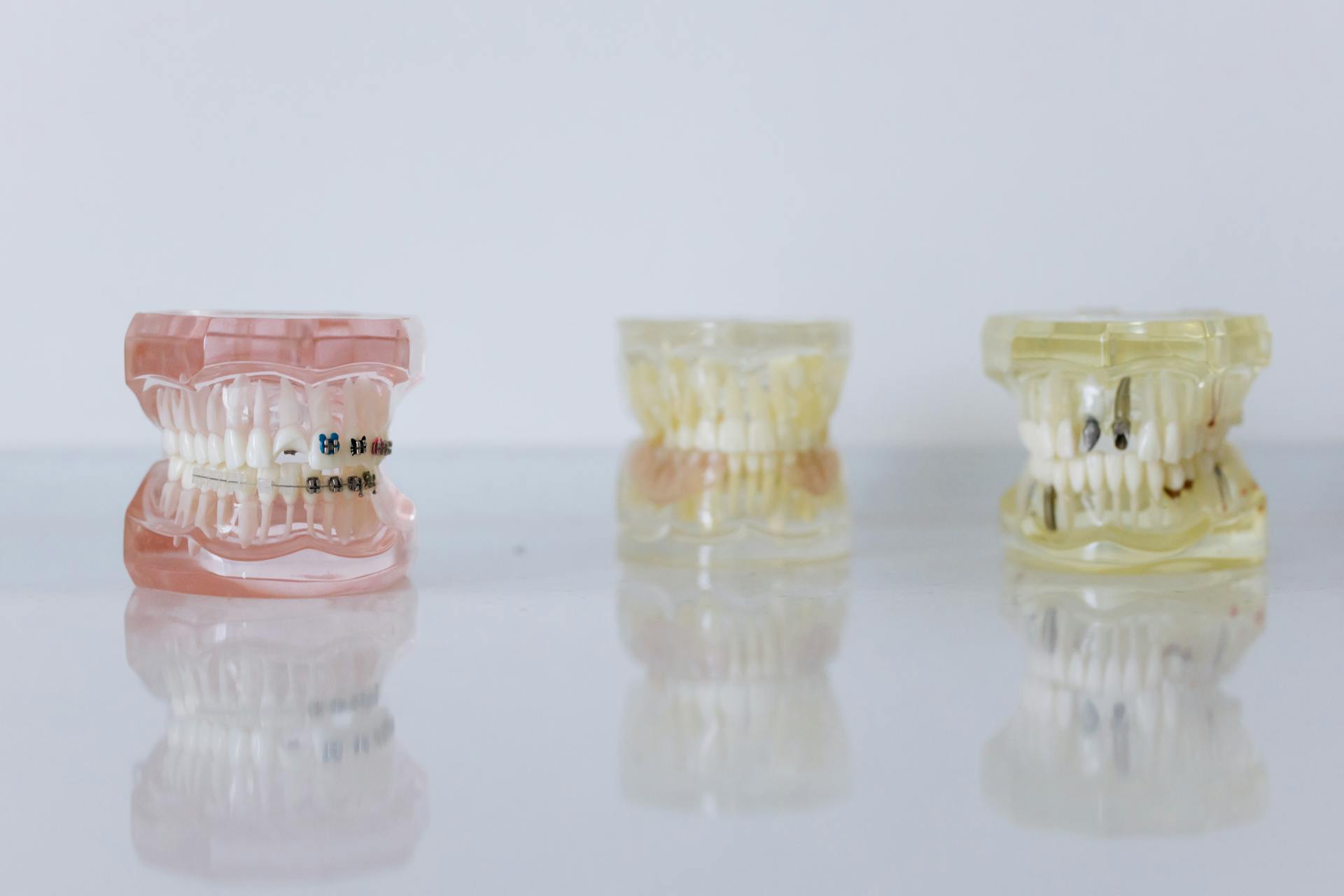
Effective dental insurance claims processing requires a clear understanding of the process and best practices to ensure timely and accurate reimbursement.
The first step is to verify patient eligibility and coverage before submitting a claim. This can be done by checking the patient's insurance card or contacting the insurance provider directly.
A well-organized claims process can save time and reduce errors. This includes maintaining accurate patient records and using a standardized claims form.
Clear and concise documentation is crucial for a smooth claims process. This includes including all necessary information, such as diagnosis and treatment codes, on the claim form.
Pre-Submission Process
Before submitting dental insurance claims, it's essential to have all the necessary information in order. This includes accurate patient data, treatment details, and insurance coverage.
To minimize errors and inaccuracies, consider adopting digital technology for processing insurance claims. Apex EDI's Software can simplify the claims delivery process with its easy-to-use interface and real-time eligibility information and claim status reporting.
A well-organized pre-submission process will save you time and reduce the risk of claim denials.
Submission and Processing

Electronic claim submission is a system that utilizes electronic claim forms and dedicated software to submit dental insurance claims to insurance companies. Electronic claim forms are created using recognized formats like the ADA Dental Claim Form.
The most commonly used software is the Dental Practice Management Software, which has a user-friendly interface and streamlines the whole process. Electronic claim submission embraces advanced technology, real-time validation, and standardized coding procedures, resulting in faster processing and efficient claims submissions.
Transmitting claim forms electronically can result in significant cost savings for both dental practices and their patients. Dental clinics can receive timely Electronic Remittance Advice (ERA) from insurance companies while using this system.
Electronic Claim Submission
Electronic claim submission is a system in which dental clinics utilize electronic claim forms and dedicated software to submit dental insurance claims to insurance companies.
Using recognized formats like the ADA Dental Claim Form, electronic claim forms contain all the relevant patient information required when processing a dental insurance claim.

The most commonly used software is the Dental Practice Management Software, which has a user-friendly interface and streamlines the whole process.
Electronic claim submission embraces advanced technology, real-time validation, and standardized coding procedures, resulting in faster processing and efficient claims submissions.
Transmitting claim forms electronically can result in significant cost savings for both dental practices and their patients.
Dental clinics can receive timely Electronic Remittance Advice (ERA) from insurance companies while using this system.
Traditional paper-based methods have been associated with erroneous, expensive, and slow claim submissions.
Clean claim submissions can be achieved by properly coding procedures, accurately providing patient demographic, attaching relevant treatment documents, and making timely submissions.
Dental billers should know the specific details required for specific claims and send them with the initial claim submission to increase the chances of the claim submission being accepted the first time.
Predetermination
Predetermination is a crucial step in the submission and processing of dental claims. Payers require preauthorization for procedures that exceed a certain financial threshold, such as greater than $500.

Dentists submit claims for proposed services prior to treatment, and the payer estimates the amount the plan will pay and the amount noted for member responsibility. This process is also known as a pretreatment estimate.
Payers carefully review treatment plans, including dental records and X-rays, to ensure the proposed procedures are both necessary and follow the plan's guidelines.
HealthRules Payer
HealthRules Payer is a highly configurable core administrative processing system that offers a unique rule set. It features the fundamentals of dental claims, including the tooth chart reference and the ability to bill per tooth per service.
This system allows for cost-effective treatments by configuring the rule set and validation policies to require specification of tooth, tooth surface, and quadrant to limit benefits and pricing.
HealthRules Payer also includes an orthodontia scheduler that recognizes if the claim has a banding code to adjudicate and provides adjustments to defined scheduled payments.
The HealthRules Payer Benefit Predictor manages predeterminations, providing payers an easy way to submit member dental benefit inquiries.

This system integrates with secondary editor systems through many APIs, integrating with member and provider portals and other downstream systems.
One HealthEdge customer praises the HealthEdge team, saying they are true partners in their digital transformation, and that HealthRules Payer helps them manage complicated requirements and lower costs.
To effectively streamline the process and reduce costs, payers need specialized knowledge and expertise and a core dental claims processing system on which they can rely, like HealthRules Payer.
Claim Processing and Adjudication
Claim Processing and Adjudication is a crucial step in the dental insurance claims process. It involves reviewing a claim submission and determining the payable amount if all the details are accurate.
An insurance company will send an Explanation of Benefits (EOB) indicating the verified procedures and the patient's co-payments. This is essential for dental billers to develop effective collection strategies to ensure patients clear their remaining balances.
Dental billers must also be prepared to handle denied claims, especially if the submission was inaccurate or the billed service didn't correspond with the procedure codes.
Prior Authorizations

Prior Authorizations are a crucial step in the claim processing and adjudication process. Insurance companies use them to determine a patient's coverage.
Dental billers contact the insurance company to inquire about the patient's reimbursement amount and, if qualified, the co-pay amount. This information helps patients create an effective payment plan.
Insurance claims can be denied due to the patient's refusal or inability to make the required co-payments. This can be a costly and time-consuming process for both patients and dental clinics.
Dental billers must include detailed documentation, such as perio charts, X-rays, treatment plans, and other supporting documents, when sending the pre-authorization request. This is especially important for complex treatments or high-cost services.
Coordination of Benefits
Coordination of Benefits is critical when patients have dual coverage, requiring thorough attention to detail and increased coordination to prevent over or underpayment issues.
Dental billers play a significant role in determining the insurance companies to assign primary or secondary insurance coverage and their coverage limits.

Typically, the primary coverage pays the patient's claims first, and if the primary plan reaches its limits and benefits, the secondary plan clears the remaining eligible expenses according to its limits and coverage.
Careful communication and coordination between medical and dental insurance providers are necessary to ensure the portions of the claims are allocated accordingly between the primary and secondary payer.
State laws and regulations may, in some cases, govern the coordination of benefit plans, so it's essential to stay informed about the specific rules and regulations in your area.
Adjudication
Adjudication is a crucial step in the claim processing cycle. Insurance companies review claim submissions and determine the payable amount if all the details are accurate.
A clean claim submission is essential to avoid rejection or extended processing times. This means properly coded procedures, accurate patient demographics, attached relevant treatment documents, and timely submissions.
An insurance company will send an Explanation of Benefits (EOB) after reviewing a claim submission. The EOB indicates the verified procedures and the patient's co-payments.
If a claim is inaccurate or the billed service doesn't correspond with the procedure codes, the insurance company may deny it or reduce the amount paid to the provider.
In-House vs Outsourced Billing

In-house and outsourced dental billing aren't mutually exclusive. You can have both, and many practices do. In fact, outsourcing your insurance billing process doesn't mean firing your in-house team.
Insurance claims processing is a big job that requires experience, up-to-date knowledge, and dedicated attention. It's not something you can just delegate to anyone.
Your insurance claims revenue can account for nearly half of your overall revenue. That's a huge chunk of money, and it's worth thinking strategically about who handles this process.
Let's look at some numbers. Here's a comparison of the cost of in-house dental billing versus outsourcing with DCS:
As you can see, outsourcing with DCS is significantly cheaper than hiring an in-house insurance coordinator. And that's not even taking into account the added cost of benefits.
It's also worth noting that your in-house staff may have a lot on their plate already. They might be handling other tasks, like patient care, and may not have the time or expertise to focus solely on insurance billing.
That's where outsourcing comes in. With DCS, you'll have access to a nationwide pool of experts who can tap into each other's knowledge and solve problems quickly. And, of course, you won't have to worry about employee turnover or benefits.
Clearinghouses and Partnerships

Partnering with a clearinghouse can be a game-changer for dental practices. By teaming up with an industry expert, you can optimize your workflow and reduce the complexity of claims processing.
Clearinghouses are essentially the middlemen between dental providers and insurance payers. They bring momentum to dental claims processing with automated processes that ensure faster turnaround times.
Automated processes make quality assurance a standard procedure, increasing auto-adjudication, accuracy, and reducing re-work later in the workflow. This is especially important for sensitive health information, which needs to be accurate and secure.
Machine learning has proven useful in claims processing, with 99.5% accuracy. However, it relies on consistent and reliable forms or processes, and can't keep up with rapid changes.
To vet a clearinghouse, look for certifications like HIPAA and HITRUST. A clearinghouse that checks off most of the following list is likely of high quality:
- HIPAA certified
- HITRUST certified
- Provides technical expertise and immediate customer support
- Has a quick response time on acknowledgments
- Can receive 835s and view them in a human-readable format
- Has a user-friendly portal and easy-to-use website
- Can accept electronic attachments
By partnering with a reputable clearinghouse, you can reduce paper submissions and call center traffic, freeing up your practice to focus on what matters most: providing quality care to your patients.
Coding and Regulations

Coding and Regulations play a crucial role in dental insurance claims processing. Dental billers use a standardized coding system, mainly the Current Dental Terminology (CDT) codes published by the American Dental Association (ADA) every two years.
Accurate coding is essential to prevent delayed reimbursements and claim denials. Insurance companies require medical billers to assign each dental service or procedure to the correct dental code. This ensures that claims are submitted accurately and consistently.
Bundling and unbundling rules are also crucial to consider. These rules govern whether specific dental procedures should be billed together as a single code (bundling) or separately as a single code (unbundling). However, insurance companies have different policies, and thus the bundling and unbundling rules may vary.
To accurately process claims, payers must have an in-depth understanding of CDT codes. Dental procedures and treatments vary from routine care to preventive services to complex oral surgeries, and each comes with its own set of codes and billing procedures.

Dental payers need to stay on top of updates to coding, compliance requirements, and billing guidelines. This is because healthcare is ever-evolving, and regulations and requirements continue to evolve as well.
Here are some key considerations for a dental claims processing system:
- Capture a mix of data points associated with each procedure, including tooth number and surface configuration
- Handle bundling and downcoding
- Process large numbers of claims
- Account for and provide predetermination to provide members with estimated costs
- Manage a wide range of dental plans with different rules and requirements
System Requirements and Integration
To ensure seamless dental insurance claims processing, it's essential to consider the system requirements and integration. A dental claims processing system must be able to capture a mix of data points associated with each procedure, including tooth number and surface configuration.
To handle bundling and downcoding, the system needs to recognize and adjust claims that are component services within a main procedure. This is crucial for accurate claims processing and reimbursement.
Payers require a system that can process large numbers of claims efficiently. This means the system should be able to handle a high volume of claims without compromising accuracy or speed.
Accounting for and providing predetermination to provide members with estimated costs is also vital. This helps members understand their out-of-pocket expenses and make informed decisions about their care.

To manage a wide range of dental plans with different rules and requirements, the system must be flexible and adaptable. This includes managing the insurance provider's rules and anticipating a longer-term care plan that reduces costs.
Here are some key system requirements and integration considerations:
- Capture CDT procedure codes and associated data points
- Handle bundling and downcoding requirements
- Process large numbers of claims
- Account for and provide predetermination
- Manage a wide range of dental plans
- Manage insurance provider rules and anticipate longer-term care plans
Attachments and Data Capture
Attachments can be a major headache for dental practices, but SDS has partnerships in the dental industry that help achieve significant time and cost savings related to managing coordination of benefits and ensuring accurate claims payment.
Accurate treatment documentation is crucial for successful dental insurance claims, and it includes diagnosis codes (CDT codes), treatment notes, and radiographs.
Including all relevant information in the initial claim submission can speed up payment and reduce back-and-forth with insurance companies.
Dental insurance companies may delay or deny coverage if X-Rays and other information are the wrong size or submitted in the wrong format.
SDS offers expert data capture for claims, EOBs, x-rays, bills, and more, making it easier to manage attachments and data.
Here are some key treatment documents that should be attached and recorded to a claim:
- Diagnosis codes (CDT codes)
- Treatment notes
- Radiographs
Vyne Dental’s FastAttach(R) solution makes it simple to send all necessary attachments electronically safely and securely.
Patient Information and Data

Verifying patient information is a crucial step in processing dental insurance claims. It's essential to get all the correct information, including patient name, address, and social security number, to avoid errors that could cause delays in processing.
Double-checking patient information is especially important during the pandemic, as many patients may have experienced lapses in regular appointments or changes in employment.
Accurate claim submission is ensured when patient insurance coverage is verified, which also helps patients understand their dental insurance plan and financial responsibilities.
The verification process involves collecting insurance details such as the insurance company name, policy number, and group number, and then contacting the patient's insurance company to confirm coverage details and eligibility.
Verifying patient insurance coverage also helps prevent claim denials and ensures the dental clinic is paid for the services they provide.
Here are some key benefits of verifying patient insurance coverage:
- Accurate claim submission
- Helps patients understand their dental insurance plan and financial responsibilities
- Ensures dental clinic is paid for the services they provide
- Helps avoid delays in payments
- Helps prevent claim denials
Frequently Asked Questions
What does a dental claims processor do?
A dental claims processor reviews and verifies dental claims to ensure they meet insurance company requirements for coverage. They ensure each claim is complete and accurate, facilitating smooth processing and payment.
Who approves dental insurance claims?
Dental insurance claims are typically approved by the patient's insurance carrier, which may involve pre-authorization or pre-approval by a dentist or the carrier itself. However, even with pre-authorization, claims can still be denied, so it's essential to understand the process.
Sources
- https://therapybrands.com/blog/your-guide-to-dental-insurance-claims-processing/
- https://www.dentalclaimsupport.com/blog/dental-insurance-claims-processing-results
- https://healthedge.com/resources/blog/hrp-navigating-the-dental-maze-the-complexity-of-dental-claims-processing
- https://sdata.us/2021/06/02/dental-insurance-claims-processing-101/
- https://vynedental.com/blog/8-steps-for-faster-dental-insurance-claims-processing/
Featured Images: pexels.com


